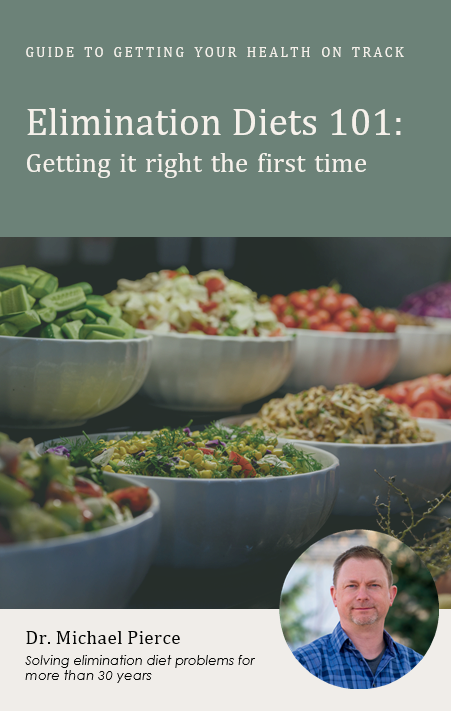Heavy metals in food have become an alarming concern, especially with recent studies revealing their presence in highly processed, common foods like fast food and school lunches. The exposure to these toxic substances is surprising considering the well-known dangers heavy metals pose to human organs, brain function, and behavior.
Heavy metal contamination can lead to a wide range of symptoms that can be easily misdiagnosed, resulting in ineffective treatments and substantial societal costs. With over a dozen heavy metals and their various combinations presenting vastly different symptoms, it’s crucial to raise awareness about this issue to protect our health and well-being.
This article is for everyone interested in their exposure to heavy metals in foods and the effects of these metals. While it is written for the layperson, it will be informative for healthcare providers who are new to the common toxic heavy metal syndromes.
Heavy Metals in Foods: What Are They & Why Are They Harmful?
Heavy metals are not full molecules, they are elements. Elements are the fundamental types of matter that were made in stars, such as iron, nickel, arsenic, and more. Some of the elements are heavier, and while not radioactive, they are poisons to humans. Heavy metals found in food are a growing concern for individuals interested in monitoring their exposure to toxins. These elements, produced by stars and found in the Earth’s crust, can be released through human activities such as mining, metallurgy, and agriculture, as well as natural phenomena like volcanic eruptions.
Heavy metals can be found in various sources, including water supplies, pesticides, herbicides, industrial solvents, medications, drugs and vaccines, fast food, processed food, and toxic fertilizers. When ingested, heavy metals interfere with the enzymes and genes of humans and animals, disrupting essential molecular processes and leading to organ damage, brain and nerve diseases, cognitive decline, autoimmune disorders, and even death.
It is crucial to raise awareness about the potential risks associated with heavy metals in our food to protect both individual well-being and public health. By understanding the sources of heavy metals and their harmful effects, we can make more informed choices to minimize exposure and promote healthier, safer diets.
What Are The Most Common Heavy Metals In Foods?
Various heavy metals can be found in different foods, presenting potential risks to human health. Below are some of the most common heavy metals present in our food sources:
Lead
Lead is a known neurotoxin, particularly harmful to the cognitive development of children. Although its use in gasoline and paint has been significantly reduced since the 1970s, lead exposure remains a global issue due to leaded gas, mining activities and the demolition of older buildings.
Mercury
Mercury exposure can lead to peculiar behavioral changes, historically referred to as, “mad as a hatter.” The term originates from the hat-making industry’s past use of mercury to stiffen felt, which led to odd behaviors among workers. To help eliminate mercury from the body, individuals can consider chelation therapy or sweating.
Copper
Copper is essential in small amounts for healthy pigmentation and hair growth, as well as maintaining strong collagen and elastin in the skin. However, excess copper has been linked to ADHD, hyperactivity, and even violent behavior.
Nickel
Nickel, often present in pots and pans, and in the base of dental crowns, has been associated with allergies, autoimmunity, and cancer.
Aluminum
Aluminum is found in food and is normally offset by silica. However, we get exposed to more of it through antacids, cookware, chemtrails, vaccine adjuvants, and herbicides. High levels of aluminum have been linked to brain cell damage and may contribute to Alzheimer’s and Autism according to Dr. Christopher Exley, the world’s top Aluminum scientist formerly of Keel University.
Uranium
Commonly found in the western United States, uranium release can result from gold mining and nuclear testing activities in Nevada and other western testing sites.
Arsenic
Arsenic is a slow poison used in gold extraction, and it can mimic smallpox and monkeypox. It is released from mining sites and volcanoes.
How To Test For Heavy Metals In Foods?
While it’s possible to test foods for heavy metals, such tests can be difficult to find and expensive. There are more tests available for humans to determine an individual’s heavy metal levels:
- Hair Tests: Hair tests provide an indication of chronic tissue excretion and overall heavy metal load over approximately 120 days or 4 months. Hair represents chronic tissue excretion and load.
- Urine Tests: Urine tests measure heavy metal clearance over a few hours.
- Stool Tests: Stool tests also assess heavy metal elimination within a few hours.
What Foods Are Free Of Heavy Metals?
While it’s challenging to find foods completely free of heavy metals due to factors like unregulated fertilizers and ambiguous ingredient labeling, there are still steps you can take to minimize exposure and consume a healthier diet.
Opt for a diverse range of fresh, whole foods, with an emphasis on fruits and low lectin and oxalate vegetables.
Choosing a variety of produce can help dilute potential heavy metal exposure from any single source. Additionally, selecting foods known for their detoxifying properties, such as cilantro, garlic, and cruciferous vegetables like broccoli and kale, may help support your body’s natural detoxification processes.
When selecting grains, look for options that have undergone minimal processing, such as whole grains like brown rice, quinoa, and oats. These choices can be less likely to contain heavy metals compared to highly processed foods.
Finally, prioritize clean protein sources, like wild-caught fish and free-range, organic poultry, which are less likely to have accumulated heavy metals compared to their conventionally farmed counterparts.
While it may not be possible to completely eliminate heavy metals from your diet, focusing on whole foods, consuming a diverse range of low lectin, organic produce, and opting for clean protein sources can help reduce exposure and support overall health.
Heavy metals, such as lead, mercury, copper, nickel, aluminum, and uranium, can contaminate various foods, air, and water sources. It’s essential to be aware of these heavy metals’ potential adverse effects on our health and well-being. While it may be difficult to find foods entirely free of heavy metals, opting for a diverse range of fresh, whole foods, clean protein sources, and foods with natural detoxifying properties can help reduce exposure.
Testing for heavy metal exposure is an essential aspect of maintaining overall health. Acute exposure can be detected through blood testing, while chronic exposure is typically assessed via hair analysis, and elimination rates are measured through stool and urine tests. Although food tests for heavy metals are not yet widely available, monitoring personal exposure levels can provide valuable insights. More companies will offer food and water toxicology testing in the near future.
Clearing heavy metals from the body involves a combination of natural processes, including elimination through stool, urine, and sweat. Incorporating detoxifying foods and practices can support these processes and help protect against the harmful effects of heavy metal exposure.
As we continue to learn more about heavy metals’ impact on our health and especially our brain,, it’s crucial to stay informed and make conscious dietary choices. By doing so, we can work towards minimizing heavy metal exposure and promoting healthier, safer diets for ourselves and our communities.
Share this article with friends and family to raise awareness about heavy metals in food and encourage healthier, more informed dietary choices. Together, we can create a healthier future for ourselves and generations to come.




